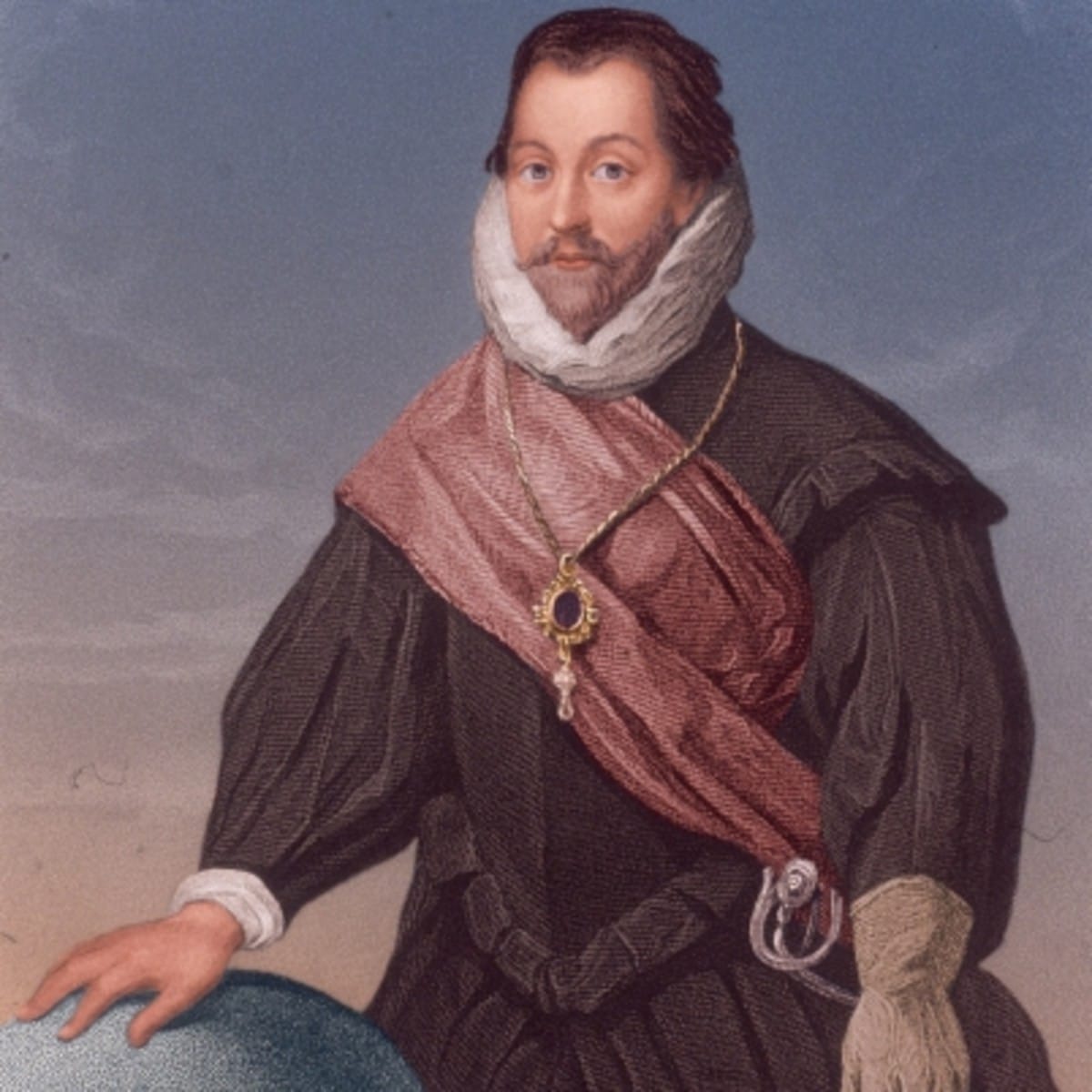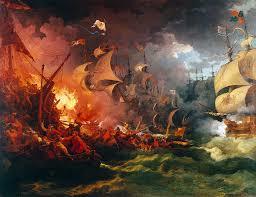Sir Francis Drake was an English sea captain, slave trader, and privateer of the Elizabethan era.

Drake carried out the second circumnavigation (First was Ferdinand Magellan) of the world in a single expedition, from 1577 to 1580, and was the first to complete the voyage as captain while leading the expedition throughout the entire circumnavigation.
Jump to:
With his expedition into the Pacific Ocean, he claimed what is now California for the English and inaugurated an era of conflict with the Spanish on the western coast of the Americas, an area that had previously been largely unexplored by Western shipping.
He lived during the time of Sir Walter Raleigh.
Sir Francis Drake Facts: Early Life
Francis Drake was born in Tavistock, Devon, England. Although his birth date is not formally recorded, it is known that he was born while the Six Articles were in force.
His birth date is estimated from contemporary sources such as: "Drake was two and twenty when he obtained the command of the Judith" (1566). This would date his birth to 1544.
He was the eldest of the twelve sons of Edmund Drake, a Protestant farmer, and his wife, Mary Mylwaye.
The first son was alleged to have been named after his godfather Francis Russell, 2nd Earl of Bedford.
Because of religious persecution during the Prayer Book Rebellion in 1549, the Drake family fled from Devonshire into Kent. There, Drake's father obtained an appointment to minister to the men in the King's Navy.
He was ordained deacon and was made vicar of Upnor Church on the Medway. Drake's father apprenticed him to his neighbor, the master of a barque used for coastal trade transporting merchandise to France.
The ship's master was so satisfied with the young Drake's conduct that, being unmarried and childless at his death, he bequeathed the barque to Drake.
Sir Francis Drake: Accomplishments
Sir Francis Drake is one of the most celebrated seamen in English history. His role during the reign of Queen Elizabeth helped make England the dominant power in Europe and set the country up for success in Colonial America. While it would be difficult to name everything that Sir Francis Drake influenced, here are some of his major accomplishments.
Piracy on the Spanish Main: Drake was an experienced sailor, but had never led an independent enterprise until he began raiding the Spanish Main. He had much success raiding and plundering throughout the Caribbean and began to build his wealth.
He led a successful raid around Nombre de Dios, in which he made his largest plunder.
Circumnavigation of the Earth: Sir Francis Drake became the first English explorer to sail around the world. He was sent by Queen Elizabeth on an expedition against the Spanish on the Pacific Coast of the Americas.
Along the way, he had his co-commander Thomas Doughty beheaded for mutiny, captured Spanish treasure ships, raid the coast of California, built a friendship with a Moluccan sultan in Indonesia, and was knighted by Queen Elizabeth on his return.
The Defeat of the Spanish Armada: The most celebrated accomplishment of Drake's life was the defeat of the Spanish Armada. Spain had become the dominant world power since the reign of Ferdinand and Isabella.
They were the first to build colonies in the New World, and the success of their Conquistadors had made them the wealthiest of all the European countries.

However, England had been gaining in strength and had begun establishing a presence in the New World.
The two naval powers finally came to blows at the Battle of Gravelines. Drake organized fire-ships the night before and was able to defeat the Armada.
With the defeat of the Armada, the English became the major power of the seas, and Spanish power began to fade.
Sir Francis Drake Facts: Death
Drake's seafaring career continued into his mid-fifties.
In 1595, he failed to conquer the port of Las Palmas, and following a disastrous campaign against Spanish America, where he suffered a number of defeats, he unsuccessfully attacked San Juan de Puerto Rico, eventually losing the Battle of San Juan.
The Spanish gunners from El Morro Castle shot a cannonball through the cabin of Drake's flagship, and he survived. He attempted to attack San Juan again, but a few weeks later, on January 1596, he died (aged about 56) of dysentery, a common disease in the tropics at the time, while anchored off the coast of Portobelo, Panama, where some Spanish treasure ships had sought shelter.
Following his death, the English fleet withdrew.
Before dying, he asked to be dressed in his full armor. He was buried at sea in a lead-lined coffin near Portobelo. It is supposed that his final resting place is near the wrecks of two British ships, the Elizabeth and the Delight, scuttled in Portobelo Bay.
Divers continue to search for the coffin.
